3.2. Arthur
3.2.1. First afternoon (test for the first stay), July 3
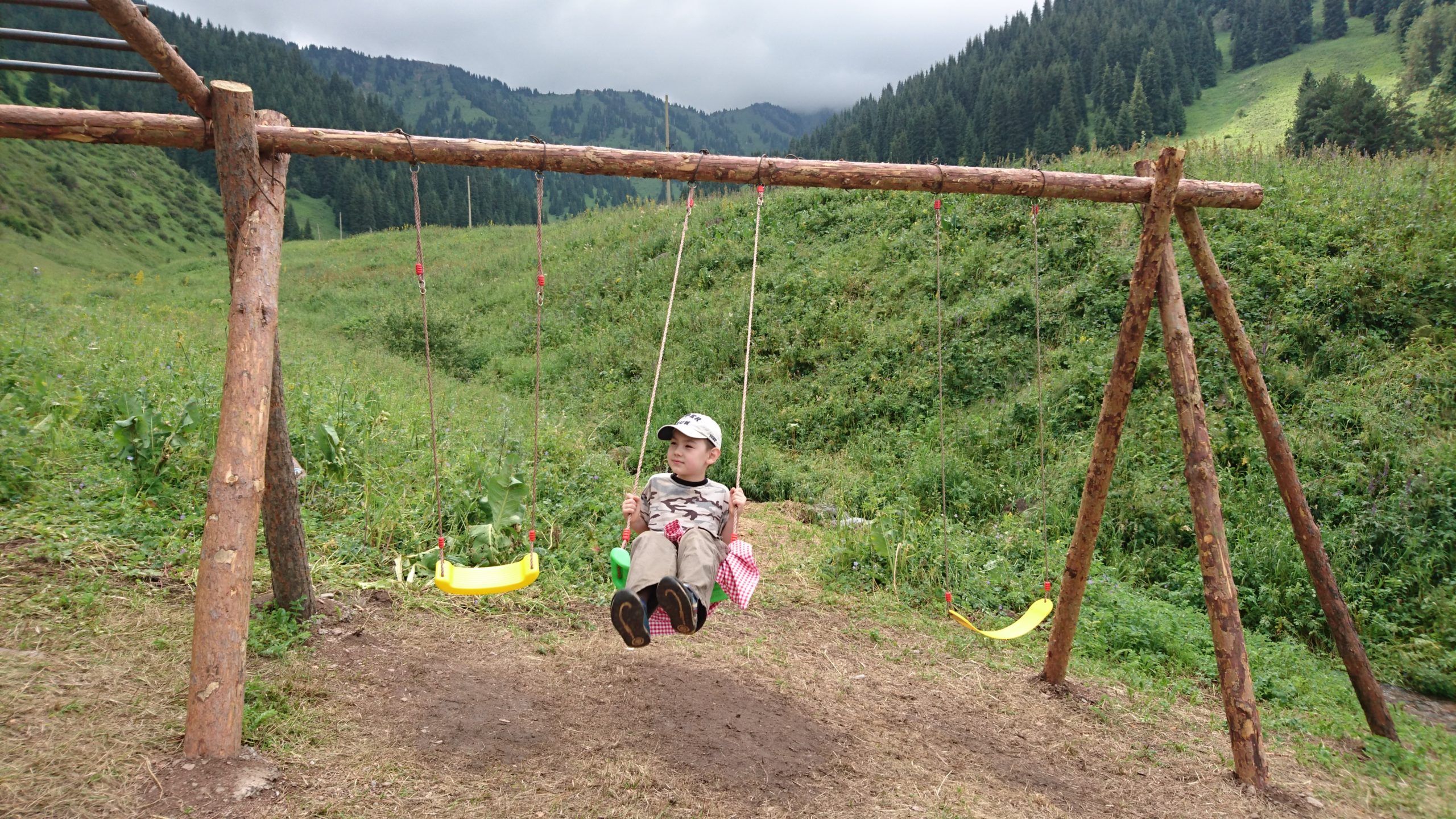
Arthur swinging, at the beginning of his stay (lonely)
Arthur on the hammock, at the beginning, lonely, and speaking “with himself”
At first, Arthur came for only one afternoon, because his parents thought that “he cannot” stay the night.
He was talking all the time, about all his thoughts. It was like if he was dreaming all the time, and commenting on his dreams. Sometimes there were some links with the reality (the reality that we could see), but many times it was impossible to “follow him”. He was also very hyperactive, and we had to hold him by the hand when walking together in the valley, otherwise, he would run away very fast and far. At the end of the day, he seemed to have enjoyed but he said that he did not want to sleep here.
I suggested the following “deal”: if he wanted to come back, we would accept it, but at the condition that he spends the night (which means that his possible next stay would last 2 days).
Not only he came back on the next day and spent the night, but he spent also all the rest of that 10 days “season” with us… And we could see that, little by little, what he was saying was more “adapted” and meaningful. And he was much less agitated, much less “always running”.
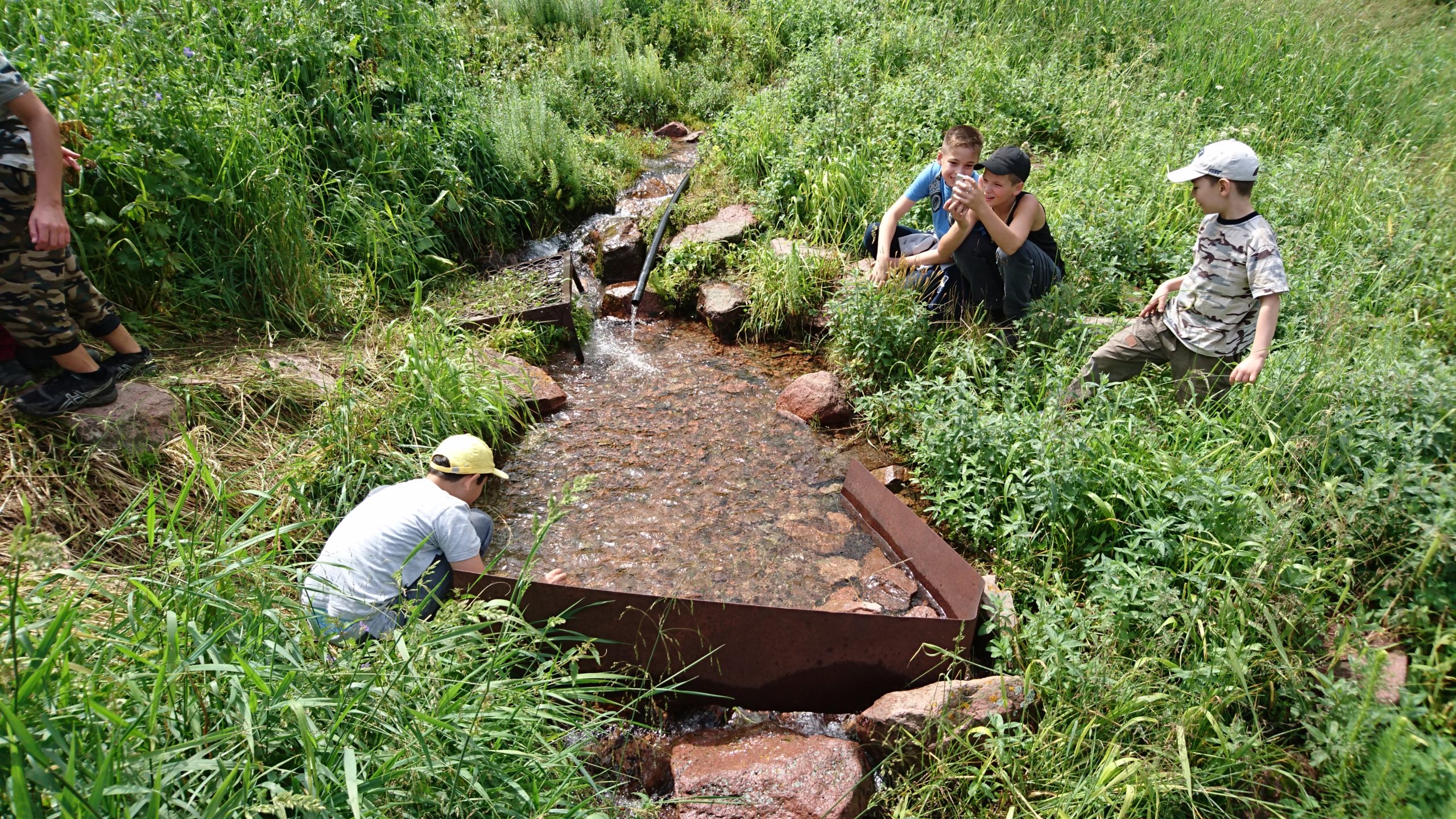 Arthur (at right) starts to be interested by the other children
Arthur (at right) starts to be interested by the other children
I think that, for him, not only the “general acceptance” and “kind understanding” of the camp was good to “calm” him and to make him “synchronize” better with “the Earth”, but also the nature and the purity of air were very beneficial (as it was for all of us).
As said above, I could feel that it was good for me also (usually I can be irritated very easily).
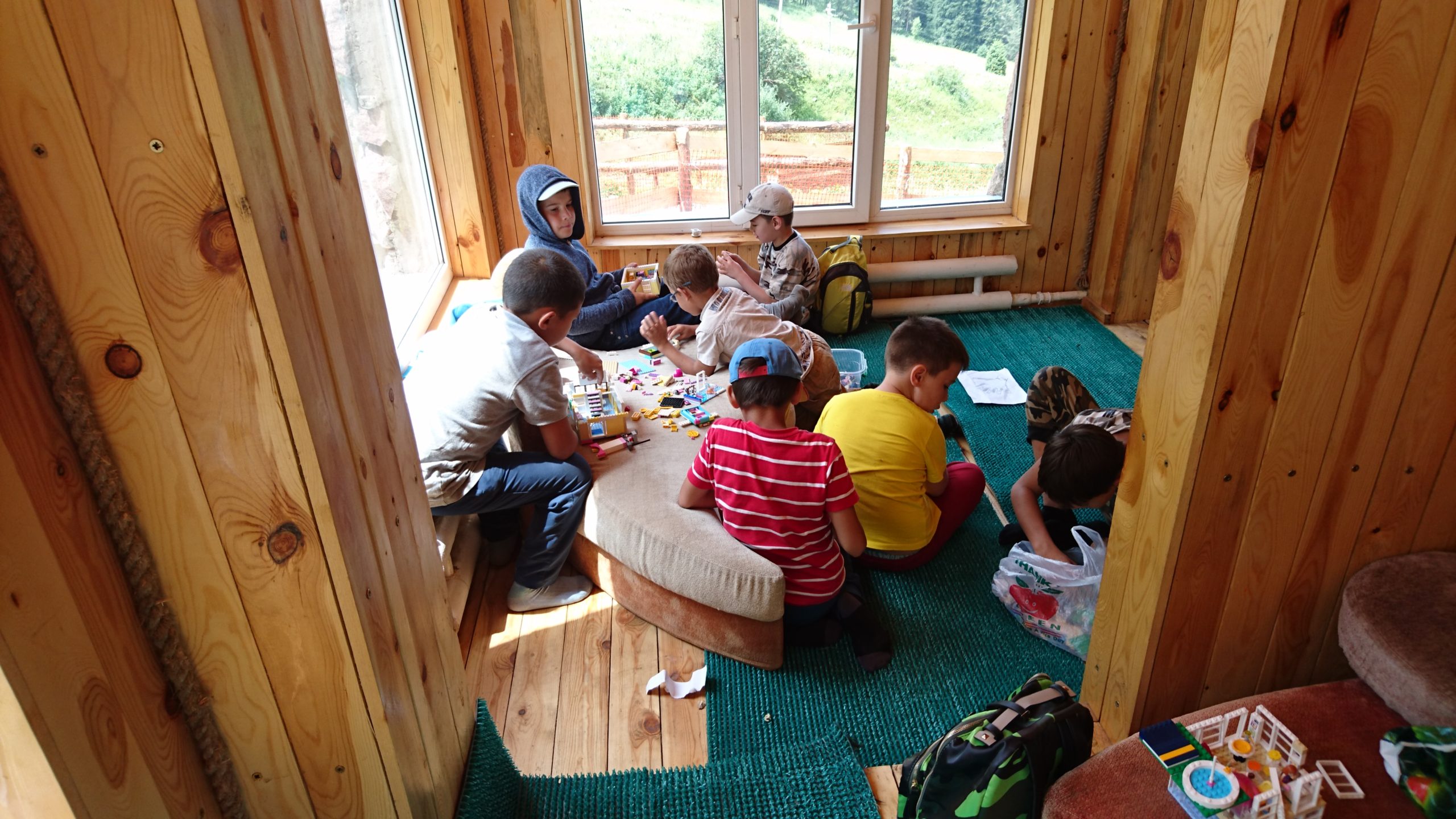
Arthur (with the grey cap)
3.2.2. First stay (from July 4)
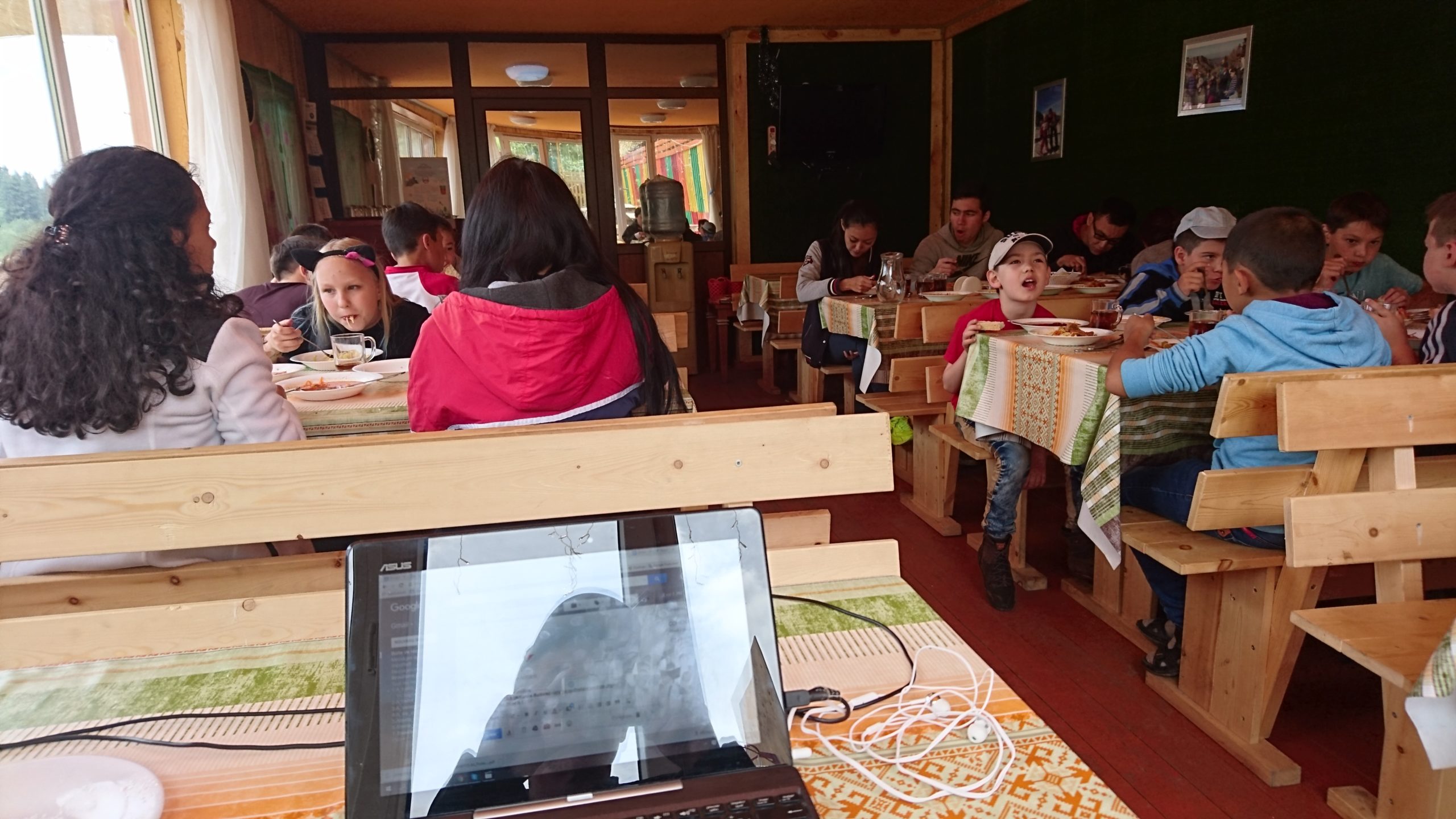 Arthur (with the open mouth).
Arthur (with the open mouth).
(In the foreground, my little computer. I was spending most of the time in this room, working with it.)

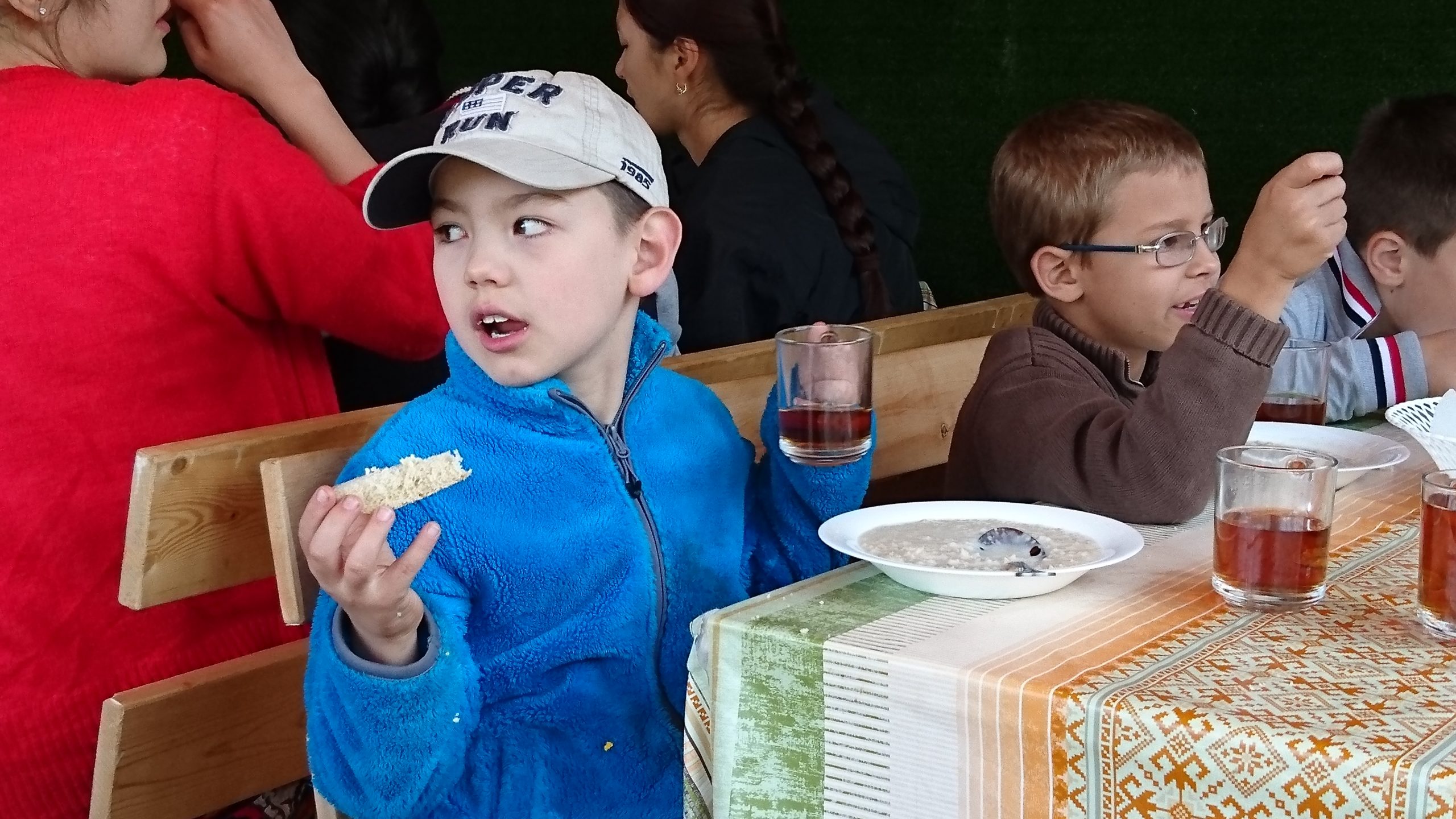
I also noticed that the kids were sometimes discussing with him, and that did not look like “nonsense” like during the first days (otherwise they would not discuss).
This was also a result of the “awareness initial information” that I described, which I do really believe is one of the keys of success (and it takes only a few minutes). (Without this, during the first season, it was Arthur who had been described as “crazy” by another kid.)
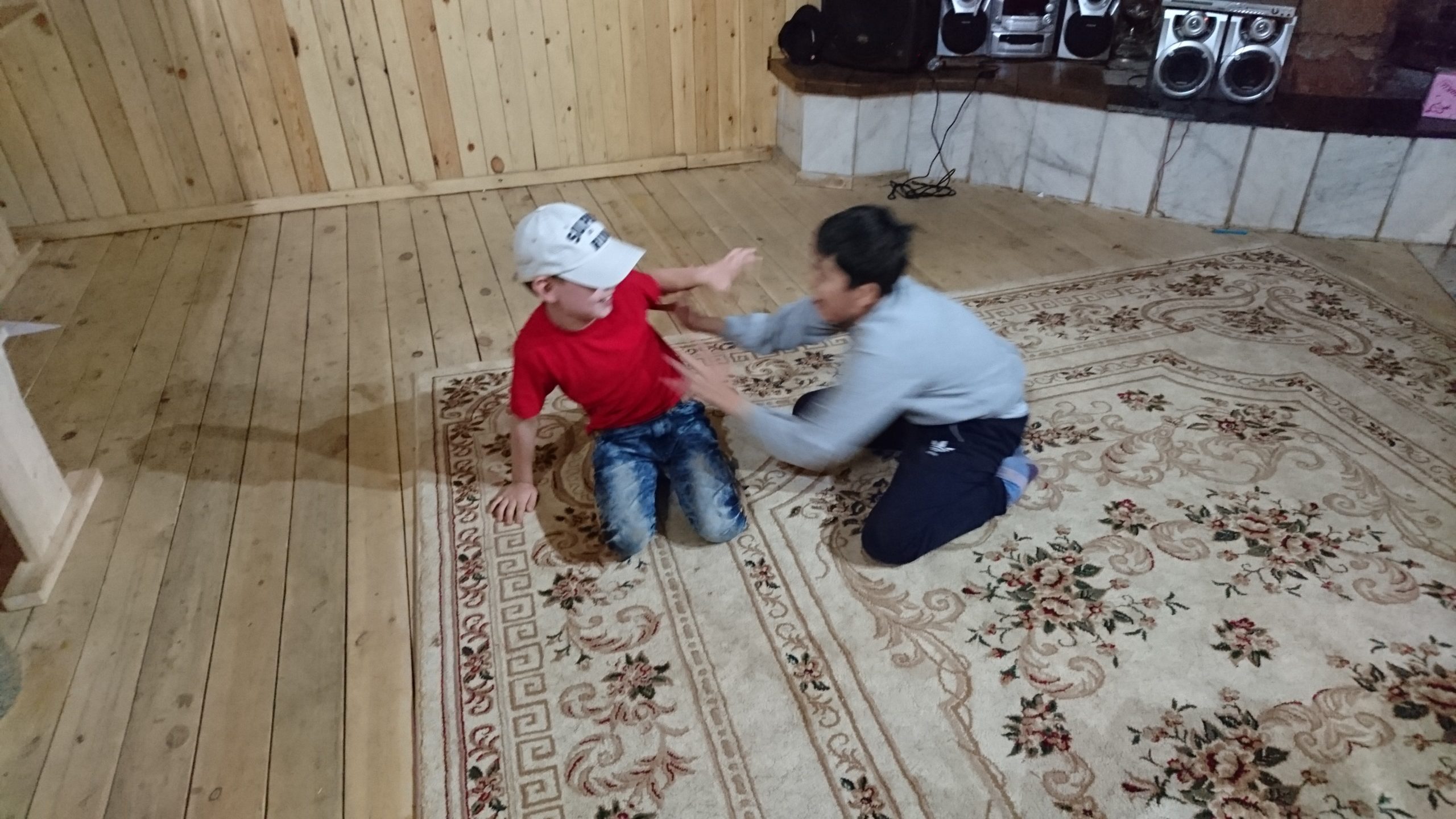 Arthur and Arsen
Arthur and Arsen
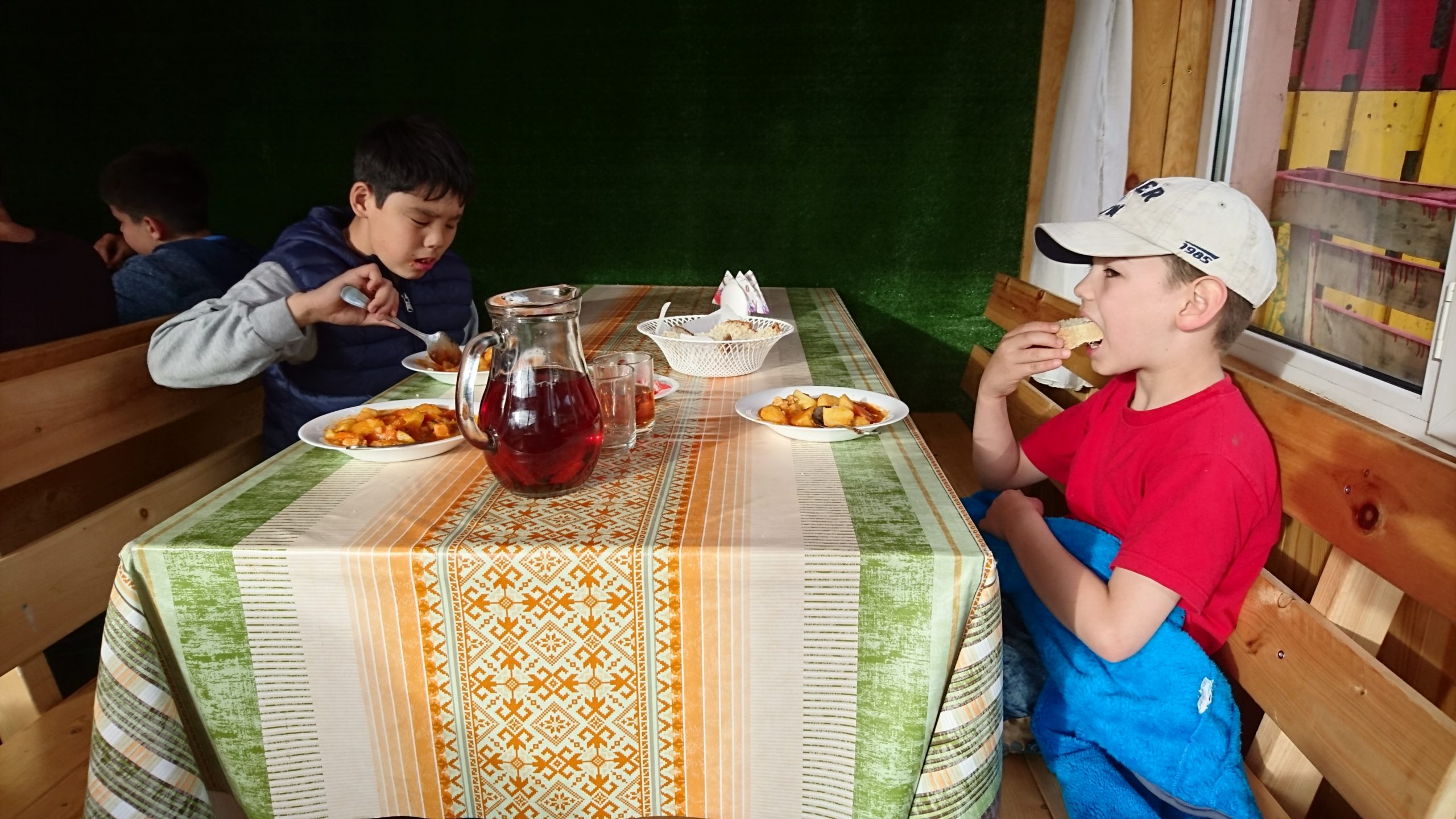 Arsen and Arthur
Arsen and Arthur
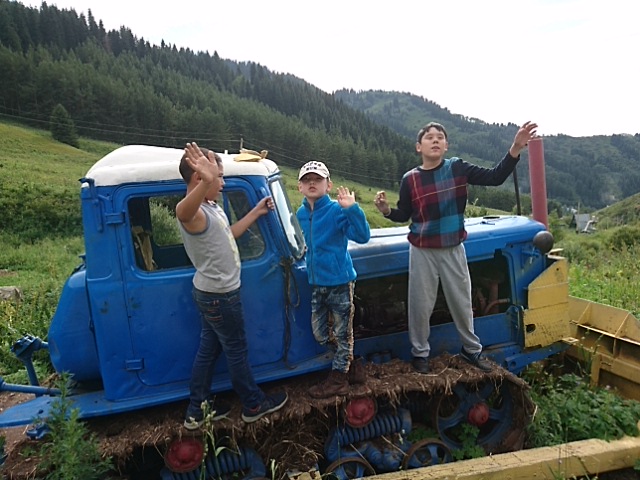
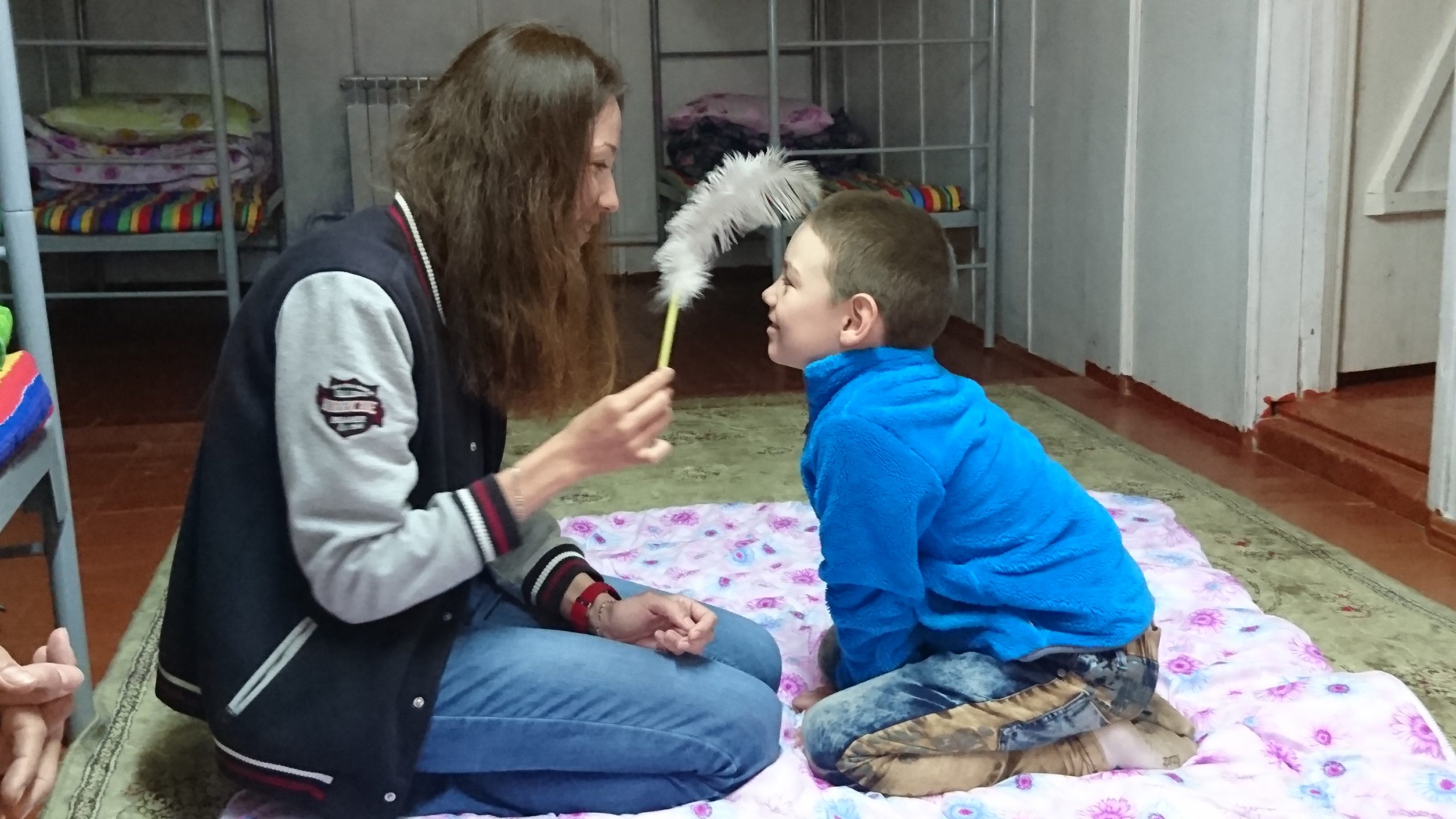 Sensory experiences
Sensory experiences
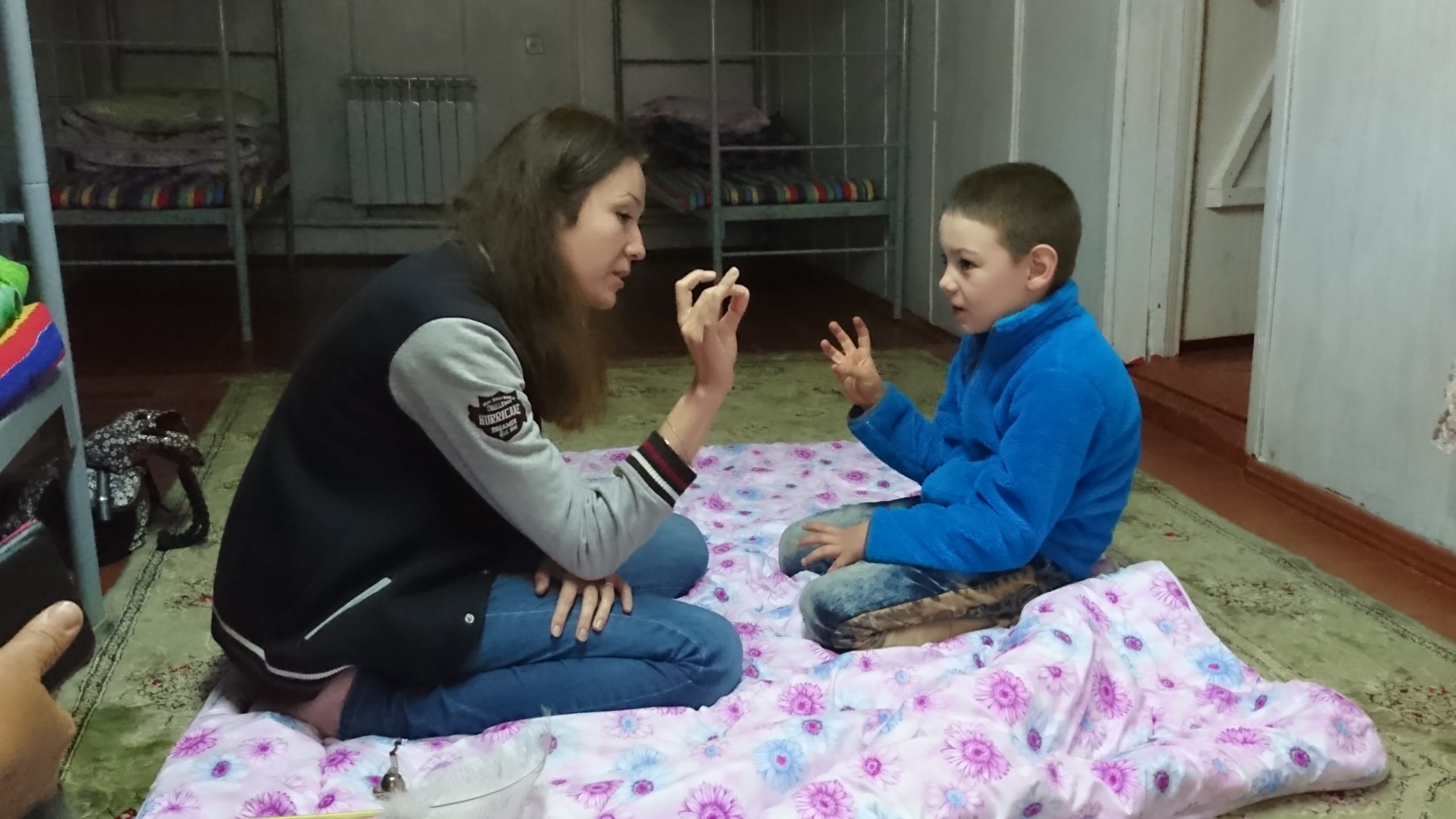
3.2.3. Second stay (from August 3)
Arthur enjoyed so much the summer camp, that he came back again a second time, two “seasons” later (a “season” in the summer camp last 10 days).
He was behaving rather “normally”, and in fact, I barely had to pay attention to him during this second stay. (That is why there is not much text for this chapter.)
Sometimes he was talking too much or too loud, but the staff and even the other kids were dealing with that, by kindly remind him, and each time he could calm down very quickly and without any problem.
Pictures and videos of his second stay (from August 3rd):
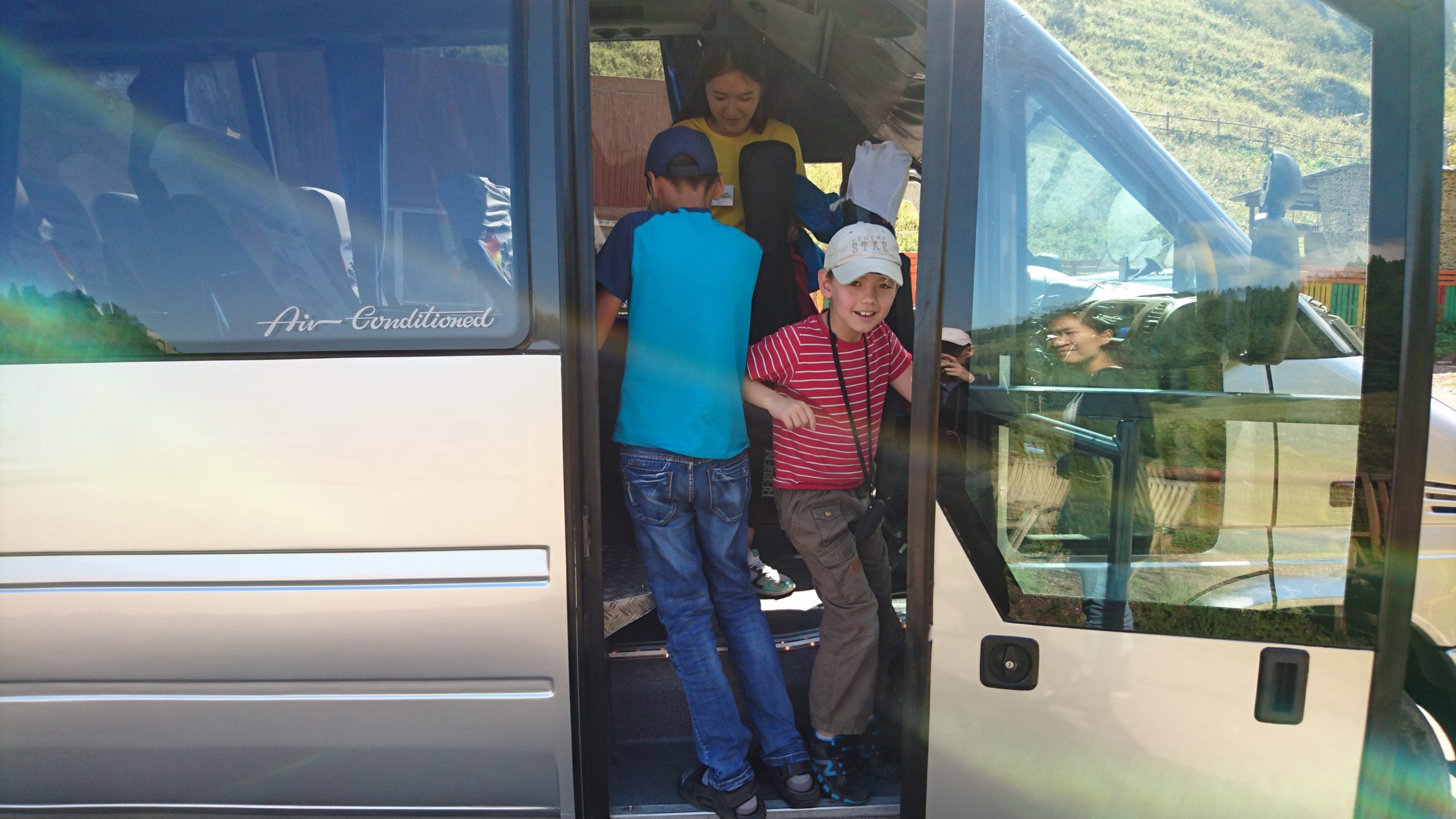
Here (arriving by bus), you can see that he is happy to come back 🙂
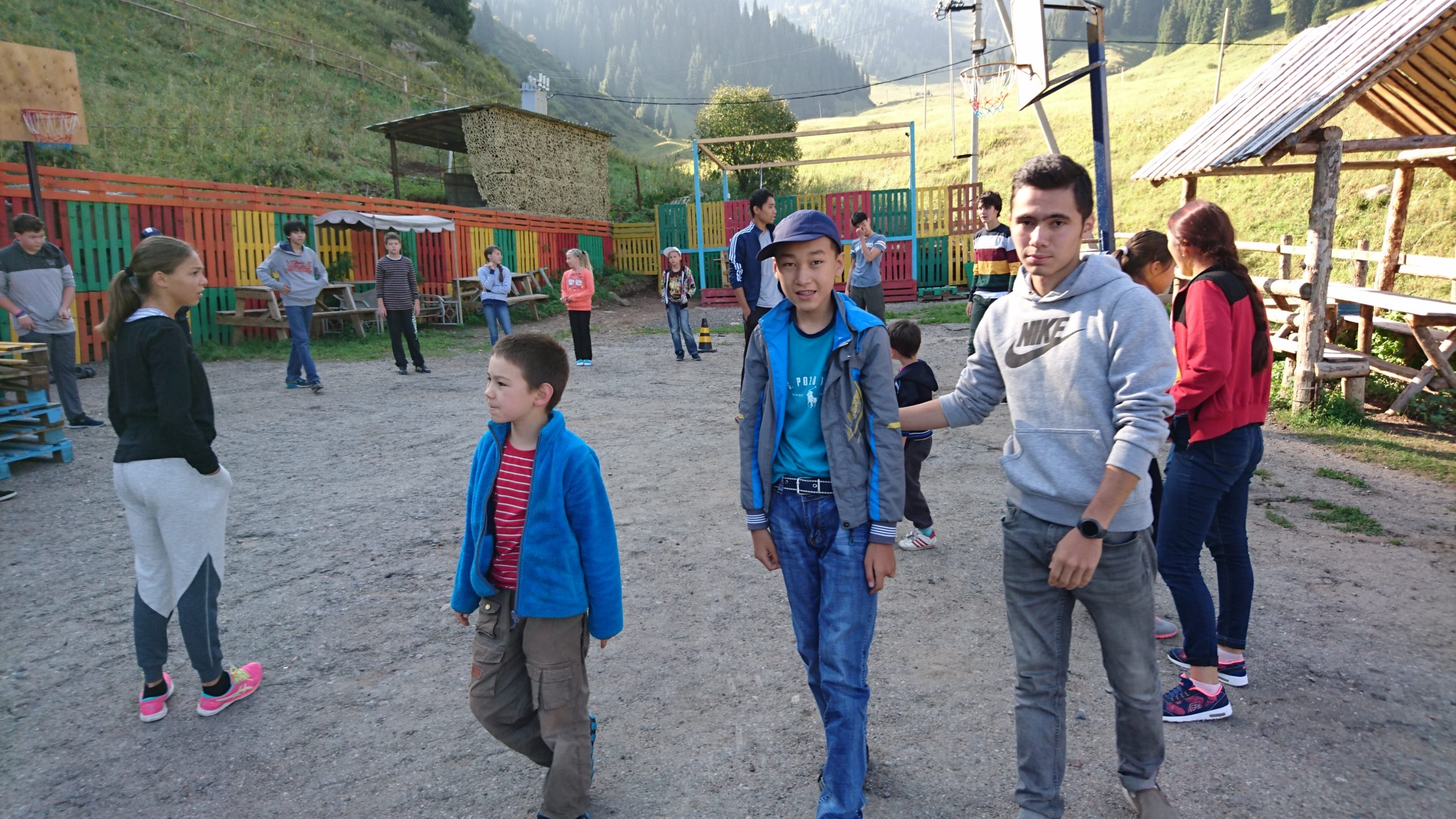
Arthur walks calmly and almost seriously, which very different from his first day (of the first stay). You can remember the first clip on the swingset, when he was talking to himself.
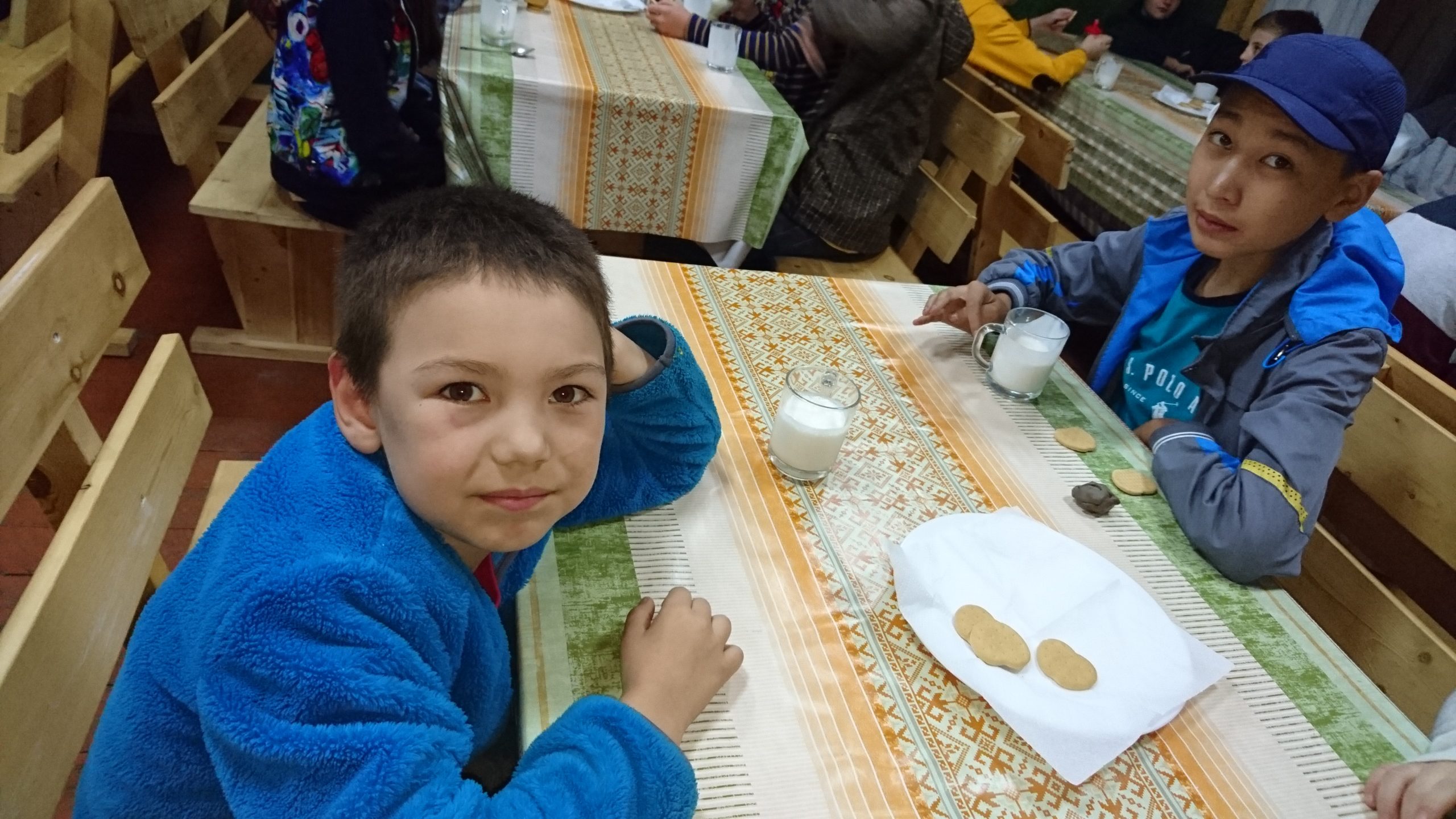 Arthur with Tima, another autistic child (see further)
Arthur with Tima, another autistic child (see further)
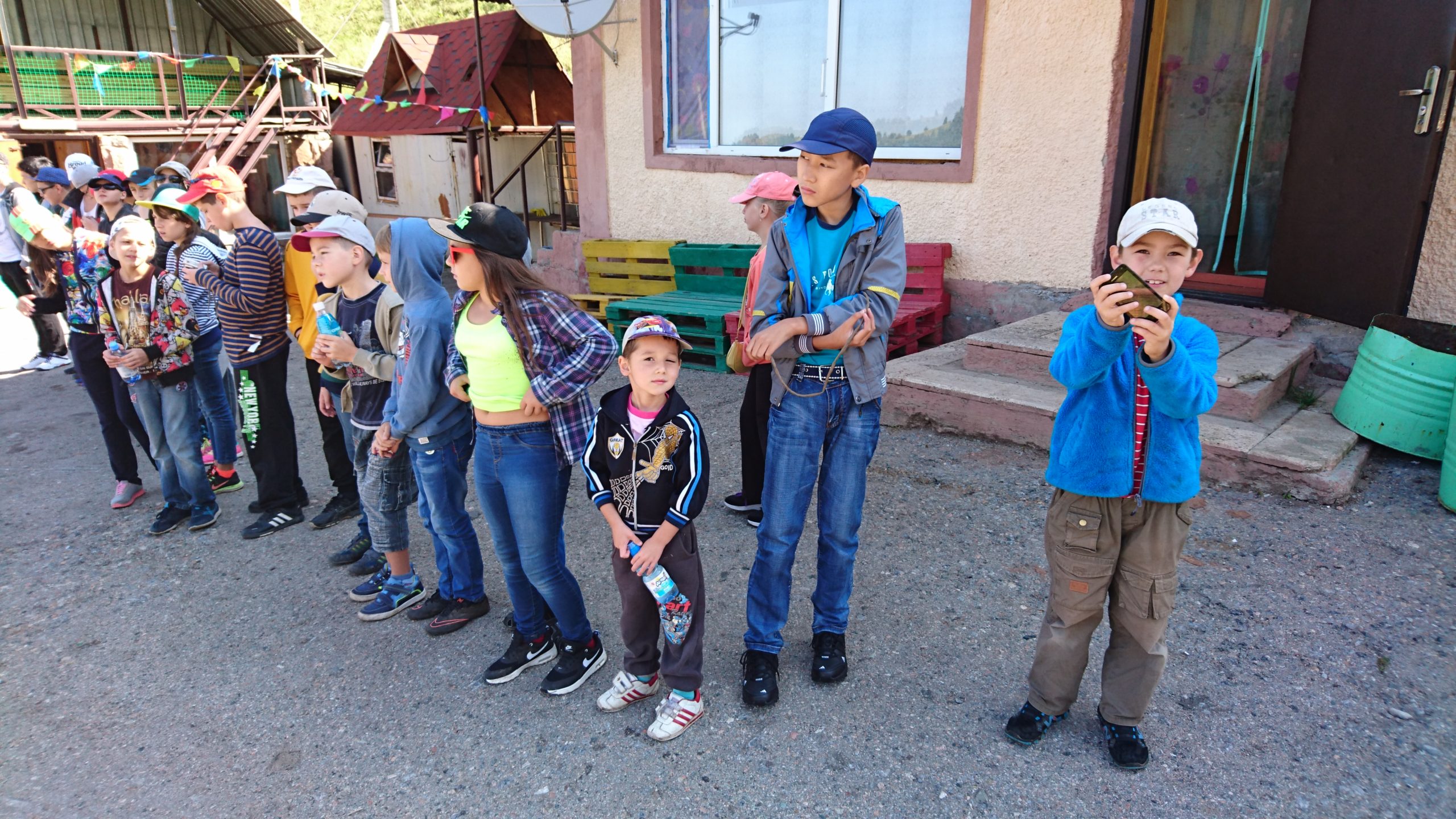
Preparing to go for a walk in the mountains (this is very different from the first two days, when we had to hold his hand all the time during these walks, otherwise he would run away).
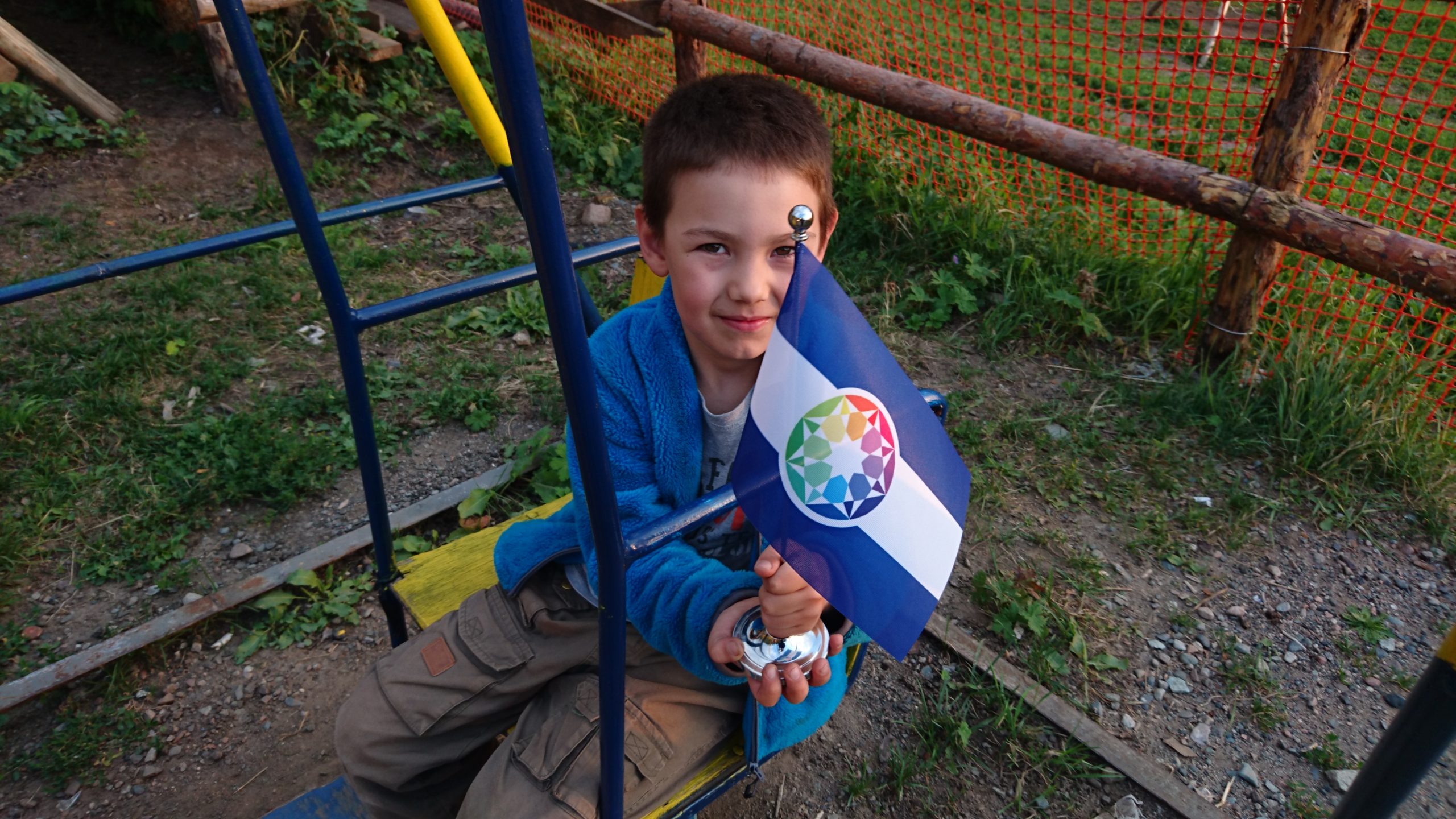
Here, on 4 August, I had just received the very first material flag of Autistan, so I showed it to the first autistic child i found to ask his opinion, and he said “that’s a nice flag” (or “that’s a cool flag”). And he wanted to hold it.


In this video, I try to get him to repeat what he said (that it was a nice flag, or a “cool” flag) and he ends up saying more or less the same thing, but it’s less spontaneous. (The first time, just before, I hadn’t actually asked him anything, he gave his opinion straight away).
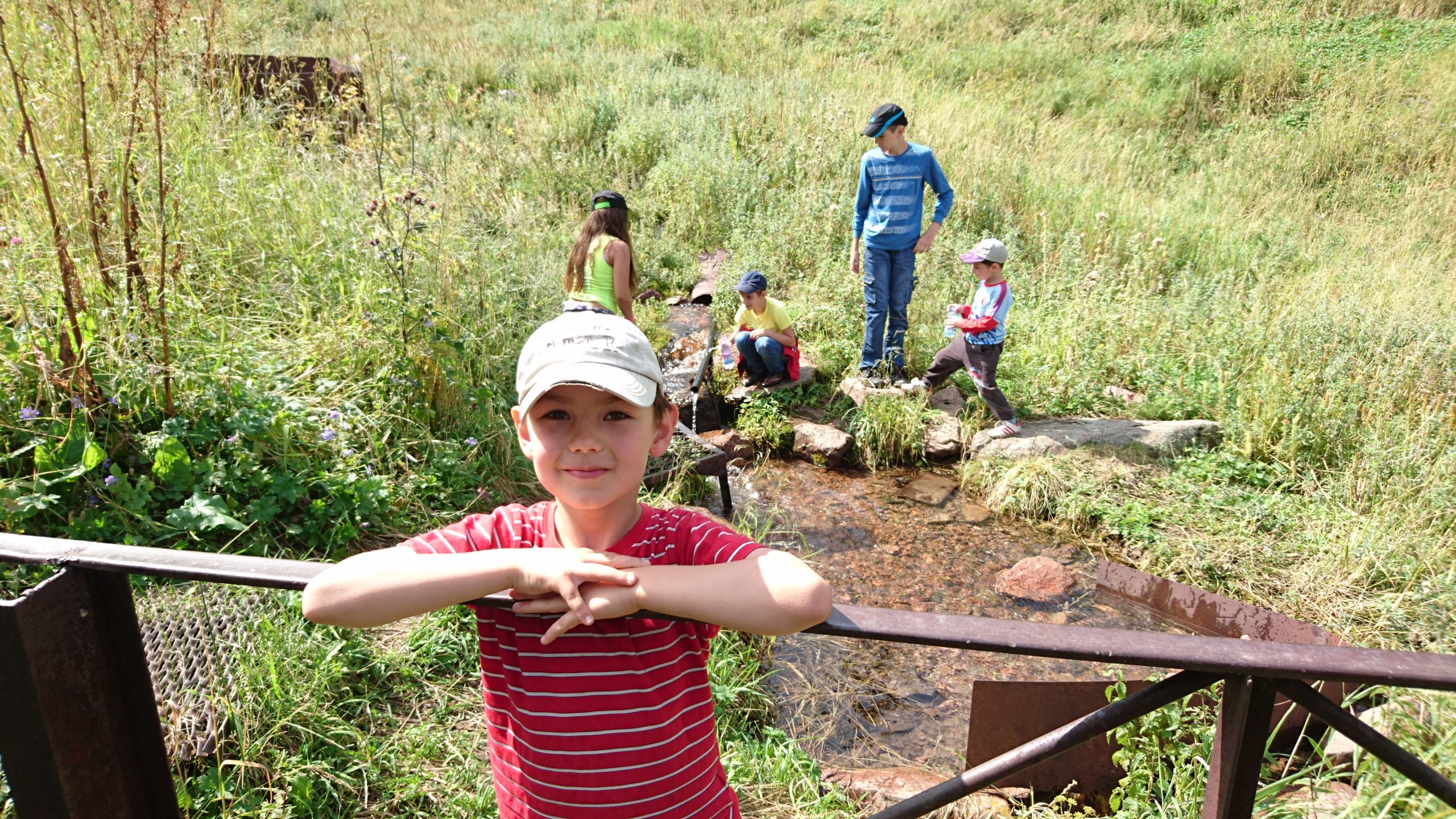 Natural simple happiness -)
Natural simple happiness -)
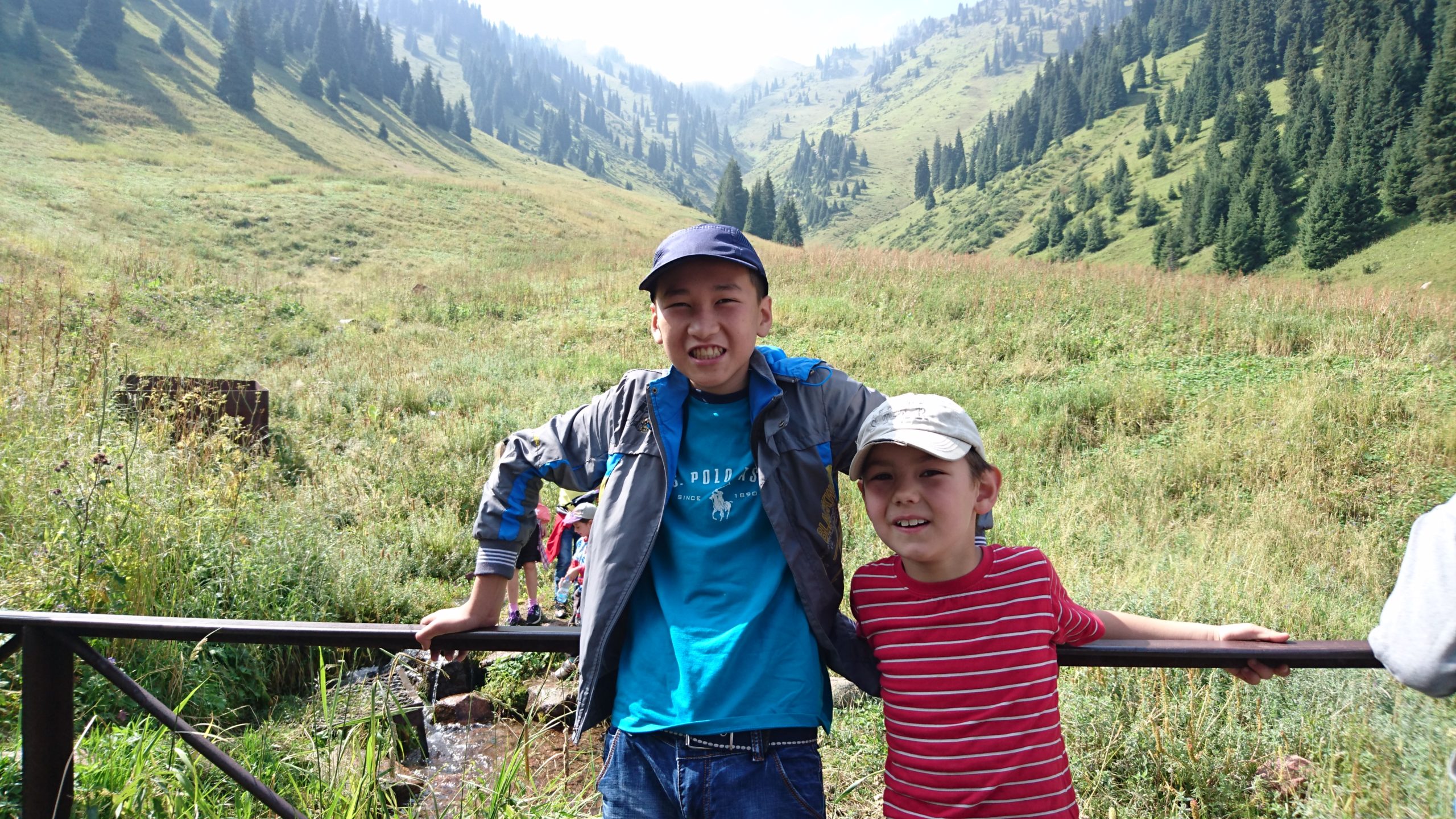 With Tima, another autistic child, in front of the “little house in the mountain”.
With Tima, another autistic child, in front of the “little house in the mountain”.
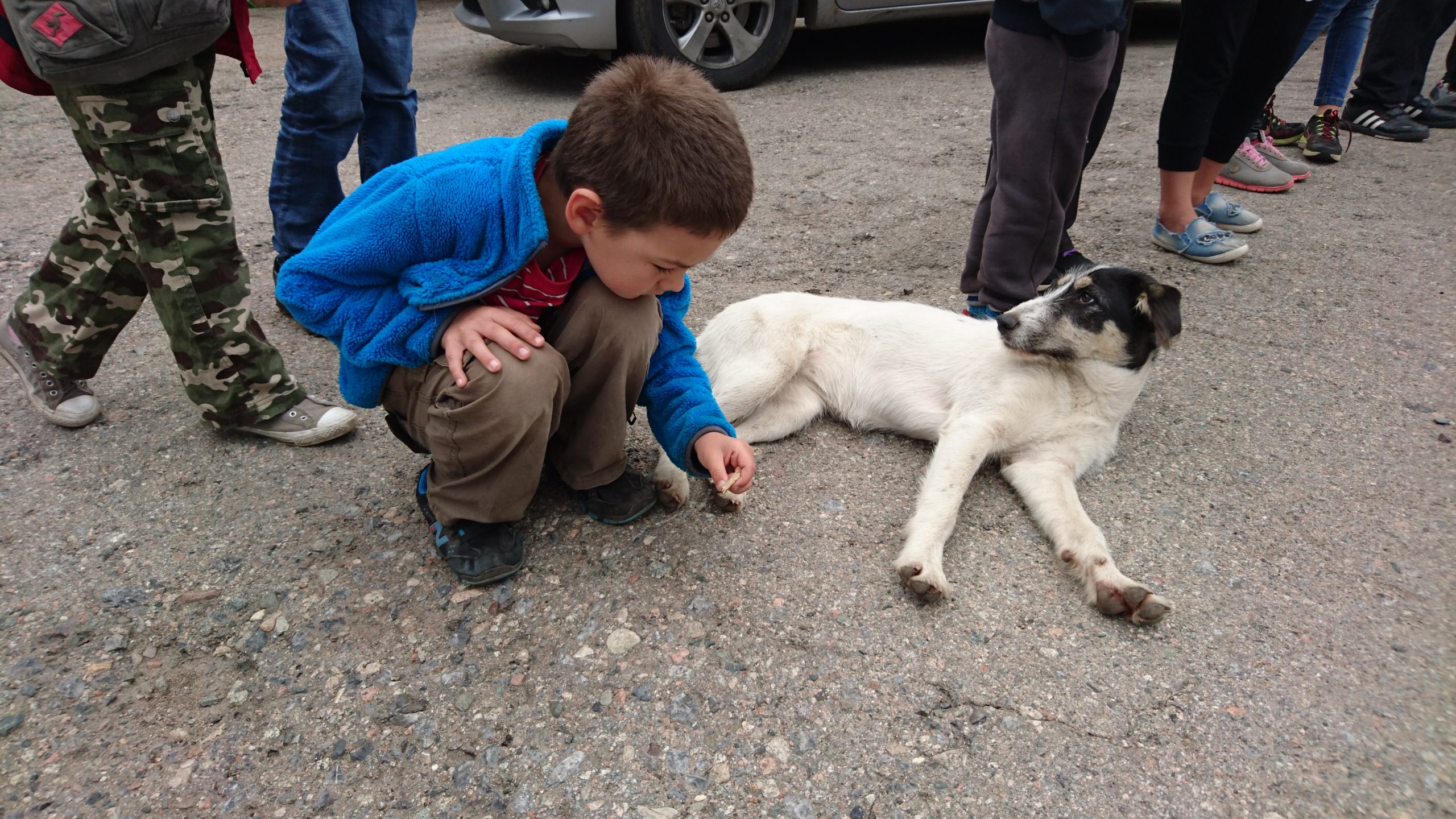
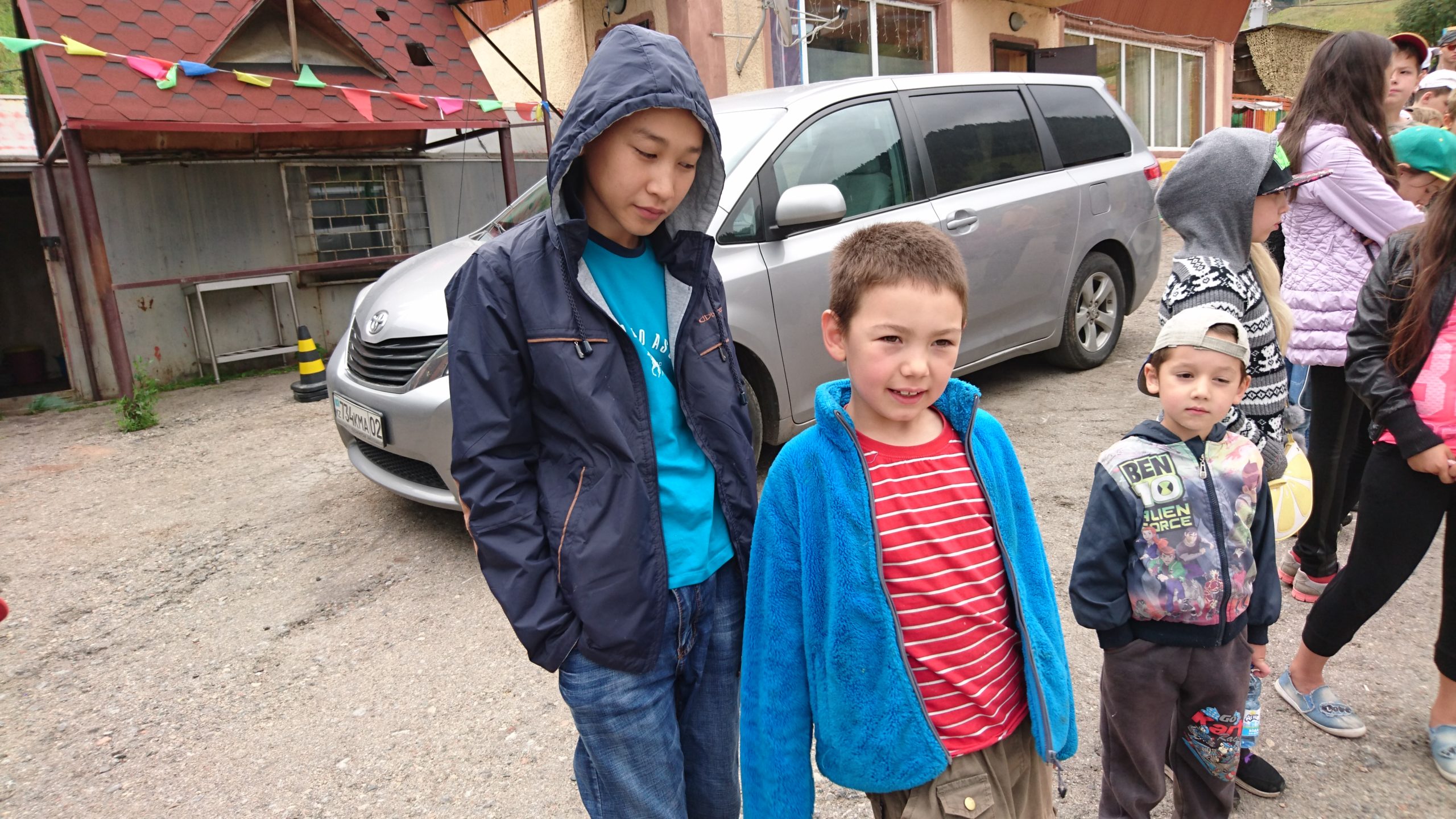

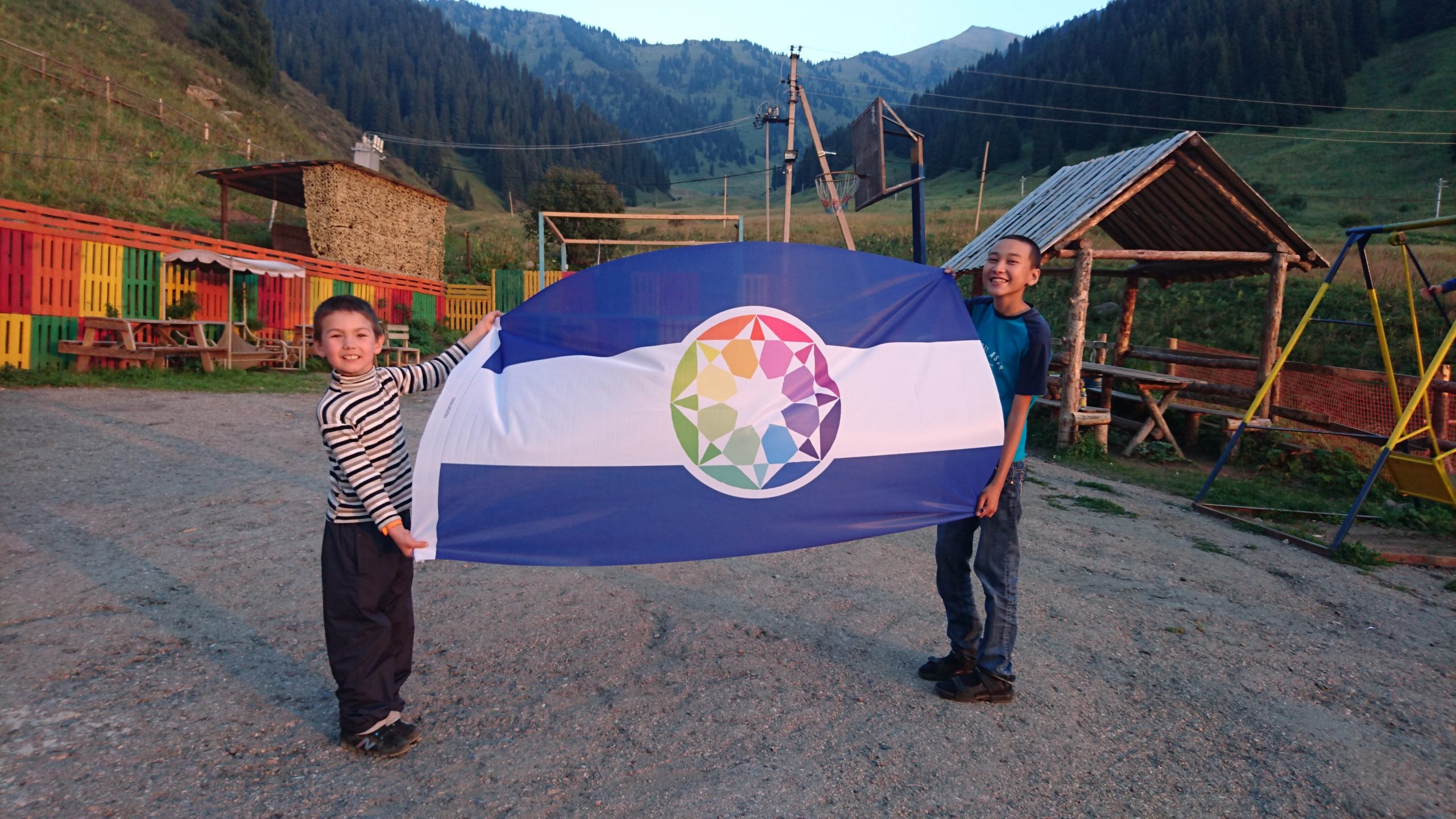
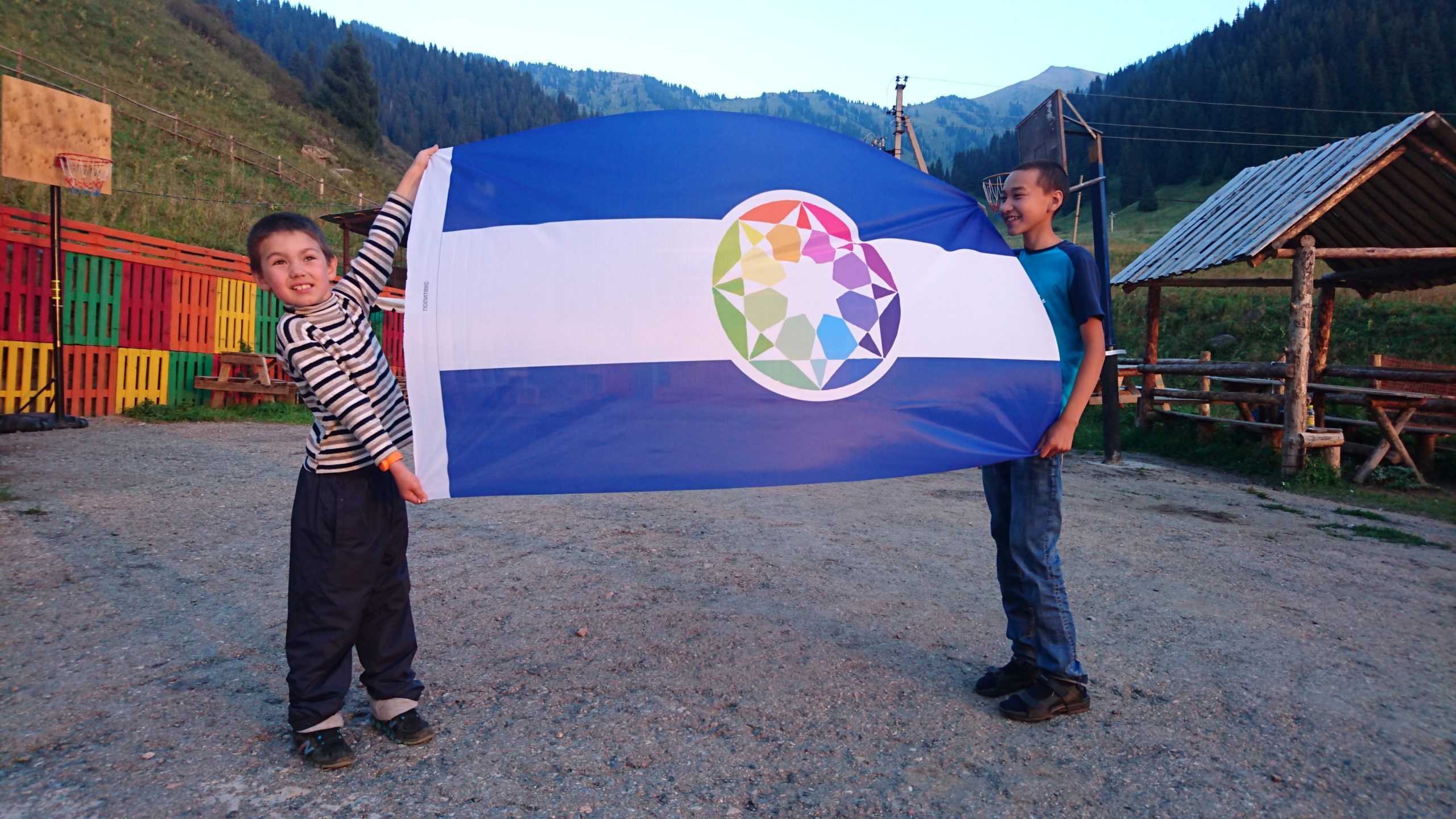
This is when we received the flag in this size, so I asked the two autistic children (Arthur and Tima) to hold it to make a “coherent” (autism) picture.
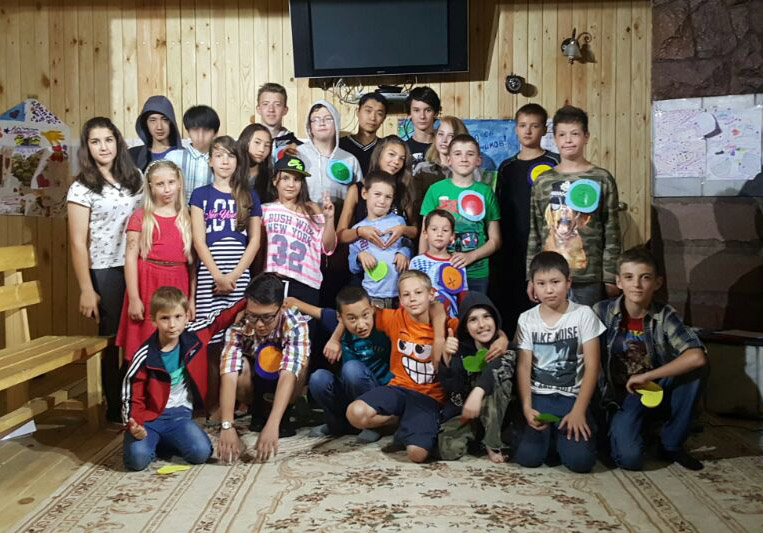
(Photo taken by instructors and sent to me)
09/08 – In this picture we see Arthur at the center.
The autistic children were not “excluded from the community” as usual (which often comes from a kind of “fear of not knowing what to do with them”).
As I explained at the beginning of this article, it was sufficient to warn the other children, as soon as they arrived, of the presence of some “special” children, and to tell them that they were not “crazy” and that there was nothing to worry about because we were handling it completely (and they could see that there was even a foreigner (me) especially for this).
The children also saw that the monitors were very caring with these special children, as if they were “fragile”, so the very idea of rejecting them could not occur to them.
And therefore they did as we adults did, i.e. by “accepting” with kindness and attention, naturally, without forcing themselves.
And given that the “different” children were (finally) treated well and accepted (respecting their differences), they felt good and they almost never had a “crisis” (or maybe only 1 minute per stay on average per “special” child, which is nothing).
Thus it is a virtuous circle, and thus it is “natural” inclusion, not just “on paper”.
This is very different from the usual approaches, which unfortunately are based on the idea that the autistic child is “defective” rather than “different”, and in which, therefore, the rare attempts of inclusion are difficult because they are “artificial”, they are not really sincere.
In summary, one of the keys to success is a good understanding of autism (or if not understanding, at least respect).
Poor understanding leads to rejection and exclusion, and therefore difficulties, crises etc., it is a vicious circle.
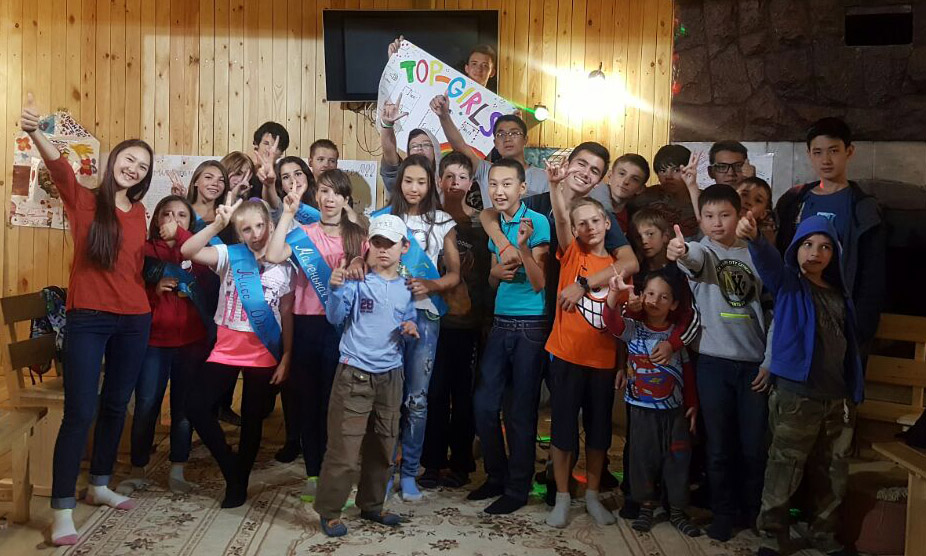
(Photo taken by instructors and sent to me)
10/08 – Here, Arthur is in the center again, like Tima.
It seems that they have organised a “top girls” election :-)…
(I didn’t often go to the main building, where a lot of activities took place in the evening, because I was working almost all the time with my computer in the restaurant room. And my bedroom was in another building.)
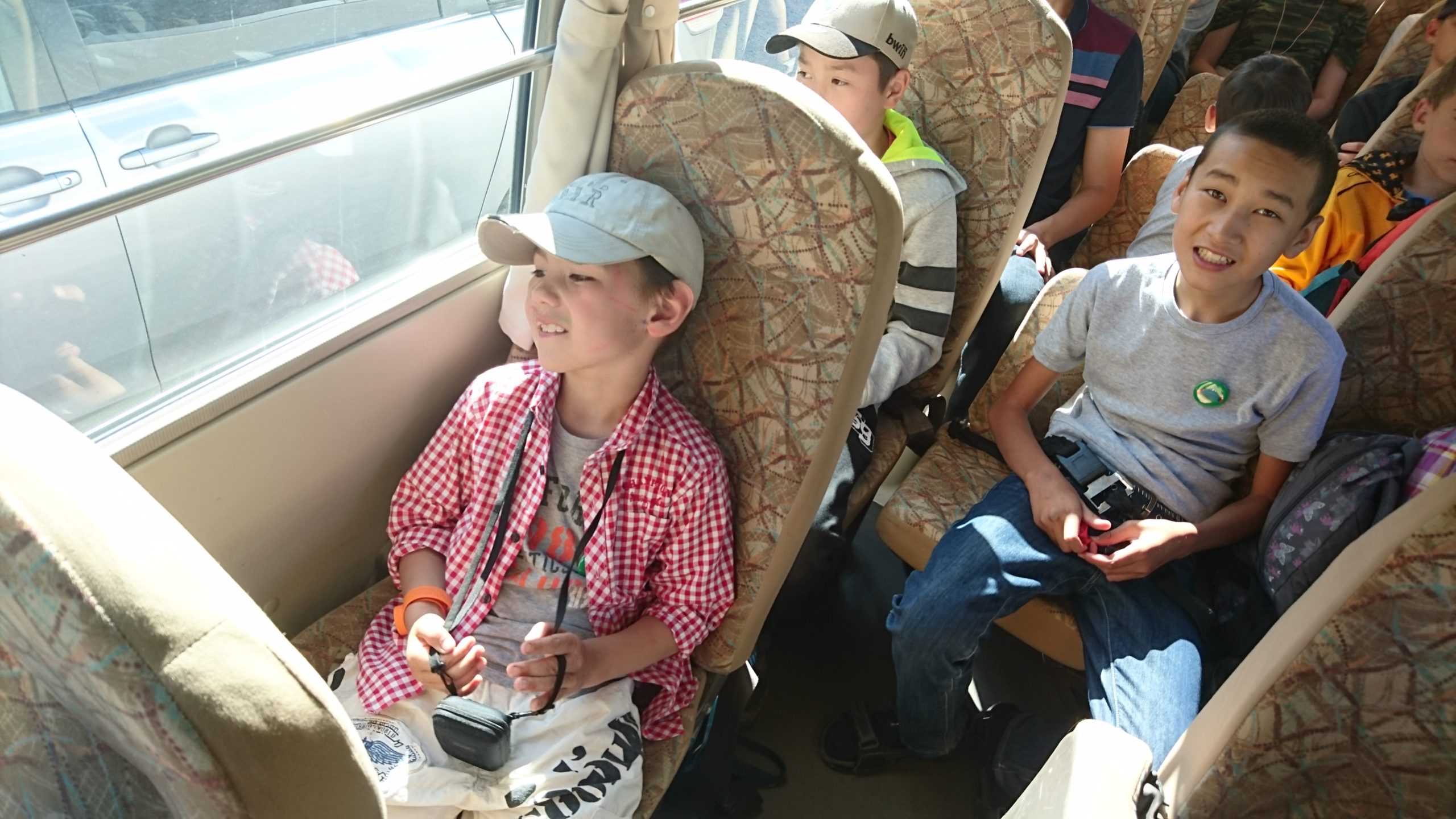
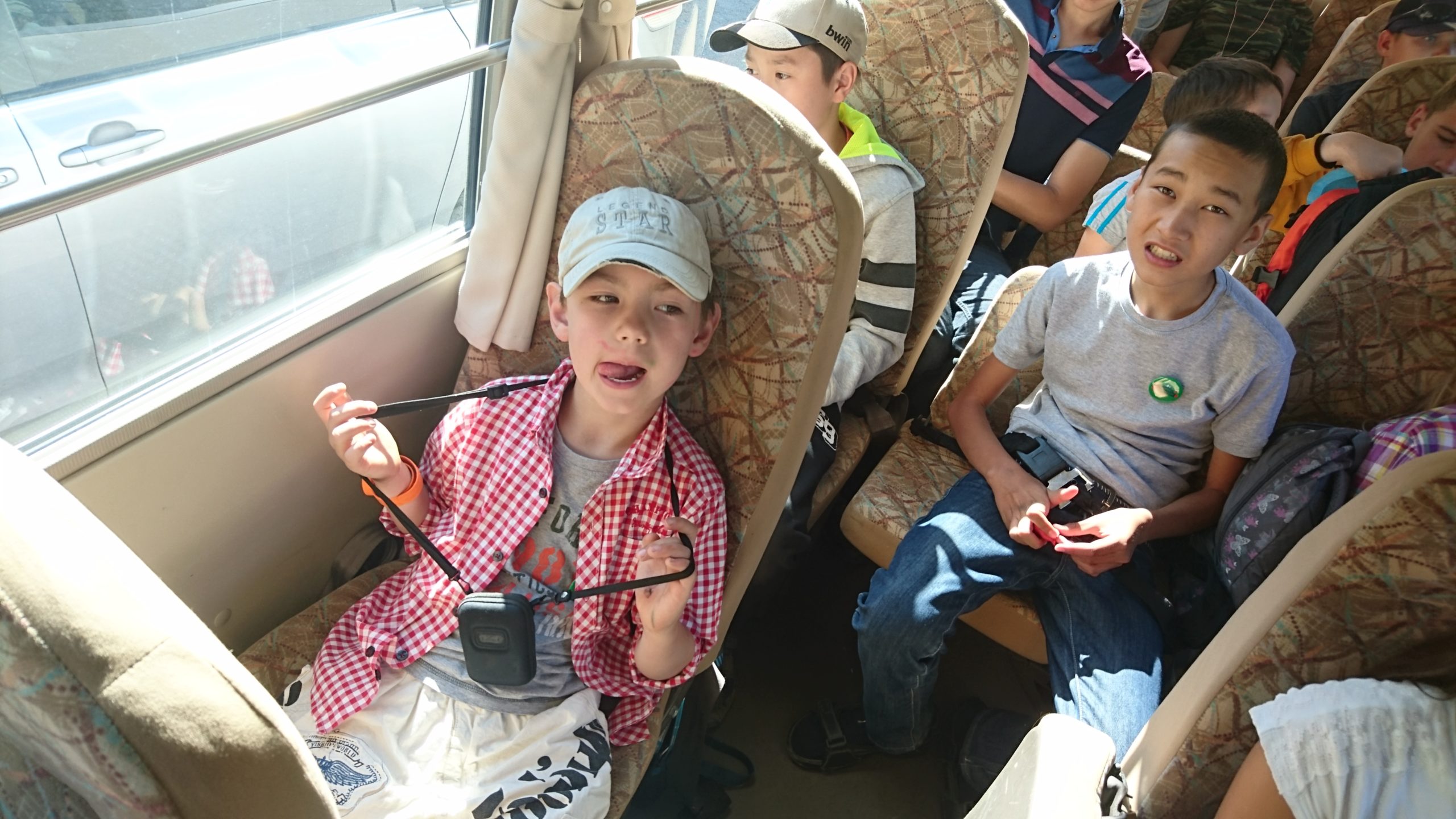
At the end of the second stay. This is that special moment when you are a little sad that it’s over, but you are happy to see your family again soon 🙂
So in conclusion, concerning Artur, that child who at the beginning was running around talking about butterflies and incomprehensible things, who “couldn’t” spend the night here, and who was seen as a “lunatic” by the other children, when we realize that he finally spent two whole stays without any problems, and that towards the end he was hardly noticed and had rather serious and calm discussions with the other children, who appreciated him, I believe that we can call it a “success”.
It’s so simple: you just need to stop thinking of autistic persons as “sick”, and give ourselves chances, instead of always being “overprotective” and believing that we “cannot” do this or that.
Of course things can be difficult at first.
But even if it takes 10 times or 100 times more effort to do some things “like the others” (which is not always desirable, but that’s another discussion…), it doesn’t mean that it’s “impossible”: it’s “only difficult”.
But if you never try, then yes, it is impossible.
 Sunset at Pioneer Mountain Resort…
Sunset at Pioneer Mountain Resort…
